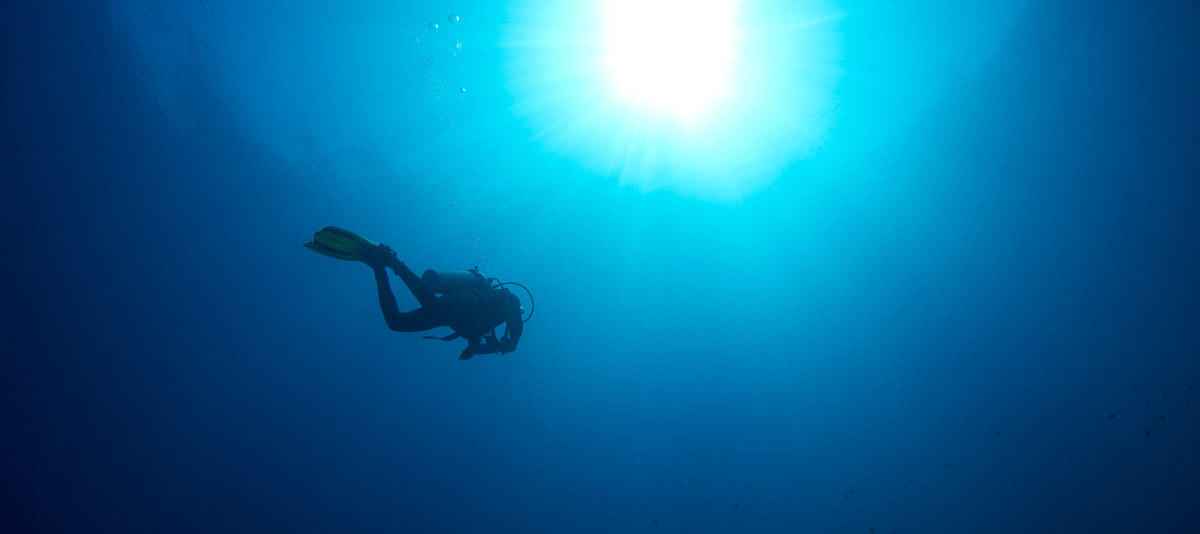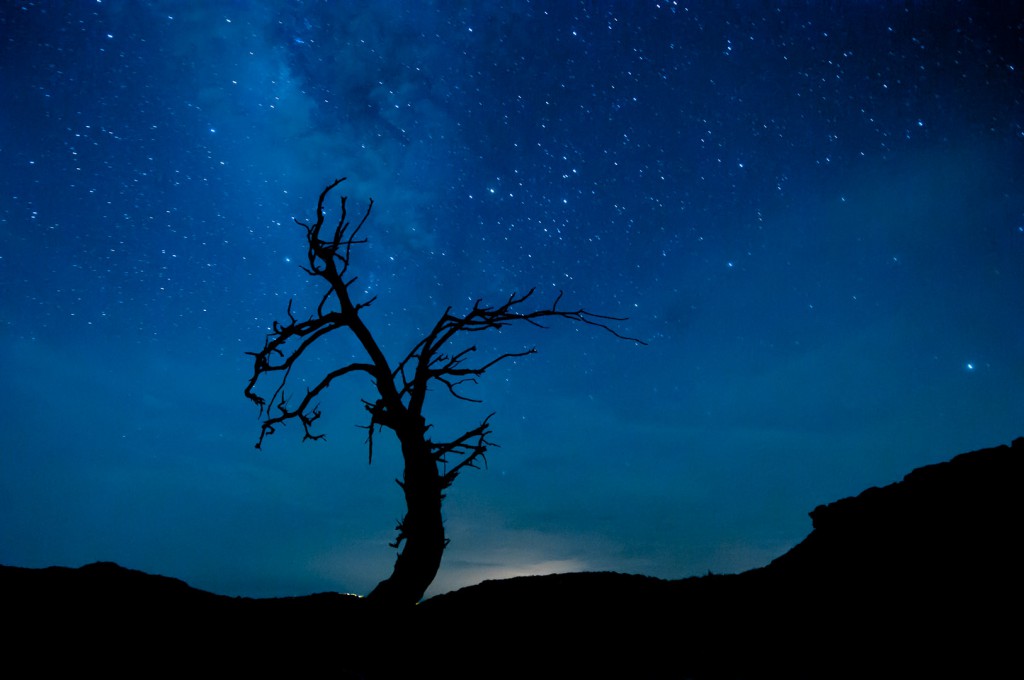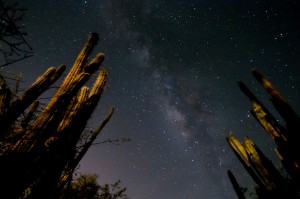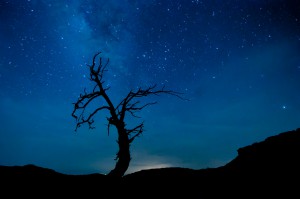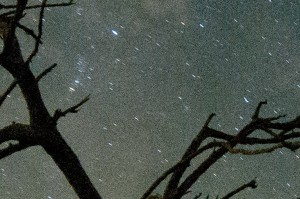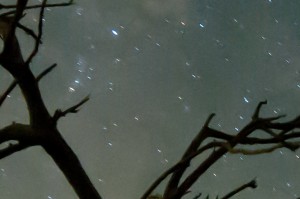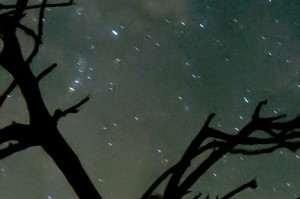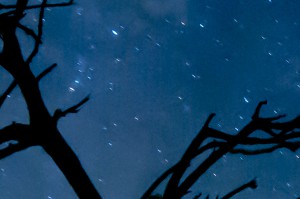At some dark parts on this globe we have a beautiful view on the milky way. It shows as a lighted band on the nightly sky. It is possible to capture it on camera. The fun part is: The camera can see more than the naked eye.
It requires a SLR on tripod and a bit of technical knowledge. This shows how easy it is. Hardest part is probably to find dark night sky, real dark night sky.
Camera settings
To capture a respectable part of the night sky you need a wide angle lens. Say 12 mm on APS-C DSLR. For ISO setting choose ISO3200 or better. Setting the capture time to 30 seconds (this usually is the maximum time on most cameras). With this combination of focal length and illumination time stars still look like dots. Choosing longer times make the stars look like stripes.
12 mm, ISO3200, F/4, 30 sec
12 mm, ISO3200, F/4, 60 sec
Post processingen
The big issue with high ISO photos is noise. Fortunately programs like Adobe Lightroom have wonderful noise reduction. Just play with the settings until you are satisfied.
1:1 crop as the photo came from the camera
After reducing noise (Lightroom: Luminance to 80, which is quite heavy, Detail to 25)
Turning up the black point
After playing with color temperature and tint
